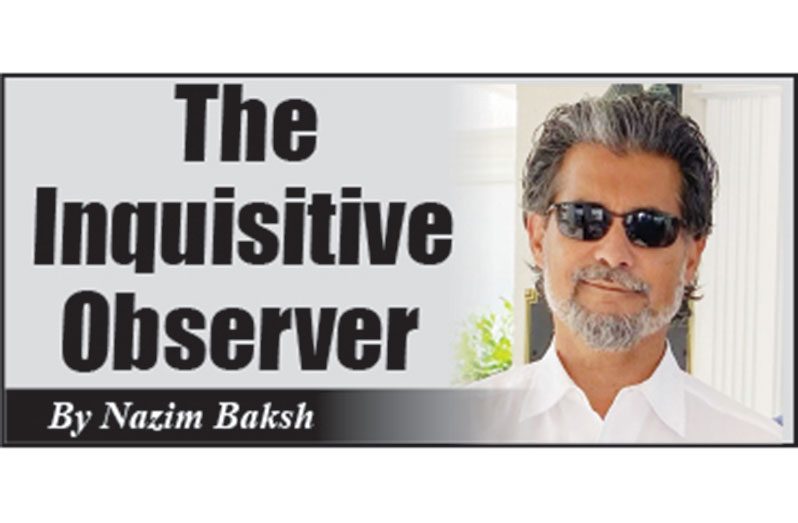MOST people I know tend to use this time to reflect on the year that went by and look forward, with a mixture of hope, optimism and occasionally doom and gloom, to the months about to unfold. There is a lot that Guyanese have going for them. We have witnessed tremendous strides in every sector of our country– water, roads, houses, health, agriculture and education. The thing about economic growth is that numbers are incapable of lying.
Instead of applauding the current administration for a job well done, the opposition leaders can’t seem to conjure up a political narrative that has traction to justify why their base should continue to support them, except for unfurling baseless allegations of racism. The opposition has made race-baiting something akin to a pastime. It is the only game in town for them.
Will this be the year that Guyanese send a resounding message to the opposition that they will no longer tolerate the stale politics of dividing our nation along racial lines? It is an important moral choice in 2025. Politics is hardly ever about personal morality or the truth, yet it often underscores our choices at the ballot boxes.
The PPP/C administration will no doubt face many formidable challenges in the months ahead. This reality gives rise to an even more important question for Guyanese in 2025; would they rather tackle these emerging challenges with the PPP/C or with the opposition at the helm? For me, the answer is rather easy.
Given what we’ve seen over the last 12 months versus what we’ve witnessed during the five years between 2015-2020, the choice we have to make in 2025 is between competence, diligence and an unwavering commitment to move the economic needle from poverty to prosperity, and from disadvantage to a menu of opportunities for everyone, from the hinterland to the coast.
Writing for The Economist, its editor-in-chief recently identified three forces that could shape 2025 – president-elect Donald Trump’s protectionist policies, which include tariffs, trade restrictions and a focus on “America First.” Second, Trump’s transactional approach to major foreign policy issues could result in alienating a number of key U.S. allies. Finally, artificial intelligence (AI) could make its grand debut in 2025 by intruding into all aspects of our lives, from healthcare to warfare.
For Alan Beattie at the Financial Times, the tariff will encapsulate 2025. He warns that “Trump’s tariff obsession involves dusting down a weapon from a bygone era” and predicts that the world is about “to spend the next four years learning how a blunderbuss performs in a modern trade war.”
Trump has pledged to impose a 60 per cent blanket tariff on Chinese imports into the United States and an additional 10 per cent if Beijing fails to clamp down on fentanyl imports. Canada and Mexico are also facing threats of 25 per cent tariffs which are also tied to fentanyl imports and clamping down on illegal migrants crossing into the U.S.
Should Guyana be concerned? To be clear, President-elect Trump has not targeted Guyana. However, could Trump’s policies dampen global demand for Guyana’s oil, gold, bauxite, sugar, rice and other commodities that the PPP/C administration has been ramping up for an export market? It is a question that economists VP Bharrat Jagdeo and Joel Bhagwandin are far more qualified to answer.
In times of economic uncertainty, investors often look for safe-haven assets such as gold, for example. An increase in demand for Guyana’s gold could send prices upward and thus increase the demand for the commodity which plays a central role in our economy, representing about 64% of our foreign exchange earnings and 15% of the country’s total economic output. Not too shabby.
On the other hand, higher tariffs could constrict exports to the U.S. such as rum, seafood, and more importantly, agricultural products. Understandably, Guyana’s direct trade volume with the U.S. isn’t vast when compared to other nations, which means that small disruptions could produce ripple effects in our economy.
There is also a potential impact that the incoming U.S. administration’s policies might have on regional trade and CARICOM. It is a wait-and-see game. Could protectionism result in higher export barriers for Guyana’s products? Could it mean a scrapping of Guyana’s preferred trade agreements, such as the Caribbean Basin Initiative (CBI)?
There is no doubt that Guyana needs the United States. President Nicolás Maduro of Venezuela is still very much a threat to our territorial integrity. However, the PPP/C administration has been strategic, both in planning and policy, by extending a hand of friendship to the incoming Trump administration, while also fostering and expanding Guyana’s economic ties to China, India and the EU.
Assuming that global tensions caused by U.S. policies may lead to a decline in oil prices and cause Guyana’s oil revenues to fall short of expectations, I believe the PPP/C administration remains the best steward for Guyanese to weather the coming storm of geopolitical shifts in 2025 and beyond.
DISCLAIMER: The views and opinions expressed in this column are solely those of the author and do not necessarily reflect the official policy or position of the Guyana National Newspapers Limited.



.jpg)








